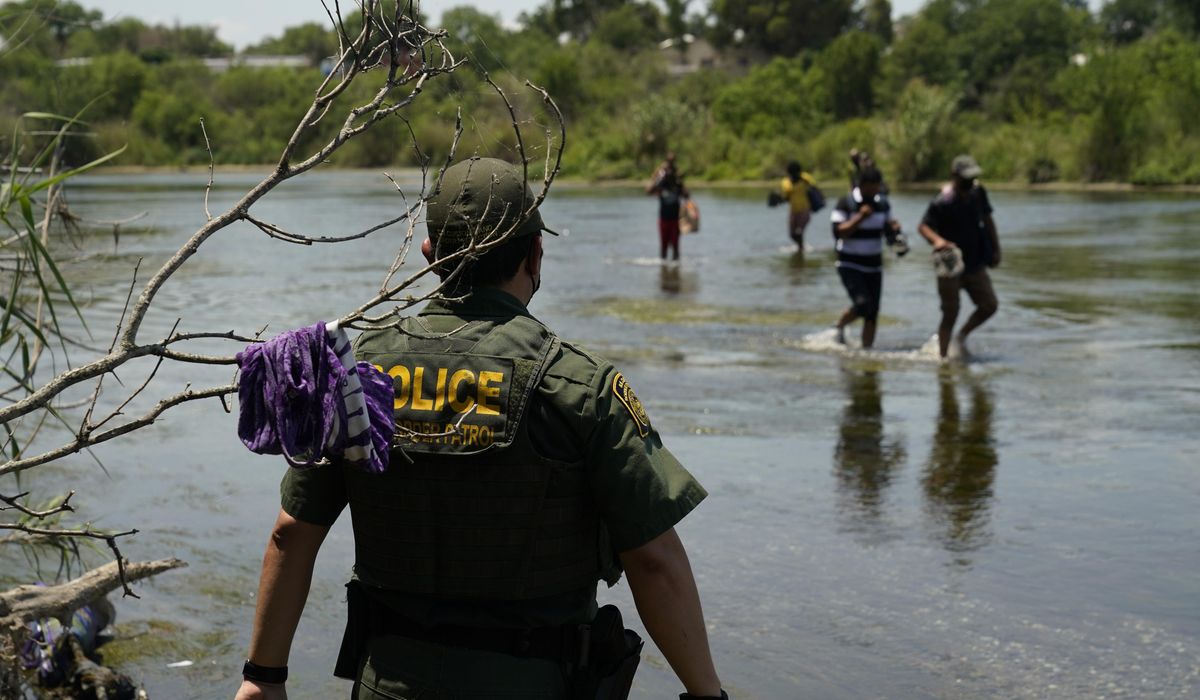

The White House on Thursday rolled out its blueprint for managing migration from Mexico and Central America, promising a broad international coalition committed to nation-building to improve conditions in key countries, matched with more legal avenues for migrants to reach the U.S.
The goal, officials said, is to try to give people who want to stay in their home nations reasons to do so — but also to make it easier for those who want to leave to get to the U.S., and other countries, legally.
“We’re not seeking to end migration,” a senior administration official said. “We’re seeking to change the ways in which people migrate.”
Dubbed the “Migration Strategy,” the blueprint vows to tackle most of the major issues in the region, from combatting corruption to whittling the dominance of violent gangs to promoting economic investments that can create more jobs and higher standards of living.
But for those who want to leave, the Biden administration is promising new ways to reach other countries legally, including new work-based visas and humanitarian protection programs here in the U.S. The administration said it will set up offices in Central American nations where people looking to leave the region can go to learn about legal pathways out,
Officials said they’ve got buy-in from other countries, too, and named Canada, Costa Rica and Spain as part of a coalition of the willing.
The strategy is the first major deliverable for Vice President Kamala Harris, whom President Biden tapped to address what the administration says are “root causes” of the migrant surge. Ms. Harris made a trip to Guatemala and Mexico and made a brief foray to Texas to look at the border to gather facts, and begin to lay the groundwork for the strategy.
“President Joe Biden and I have restarted our nation’s engagement in Central America and diplomatic efforts with Central American governments. Our Root Causes Strategy is comprehensive and draws from decades of experience—and is based on four core pieces of evidence,” Ms. Harris said in an introduction to the new strategy.
Administration officials said they’re expecting reciprocity from the countries in the region on combating corruption. The officials said that was a fair ask, given the amount of U.S. taxpayer money that will be committed over the years.
The effort is the latest in a long line of attempts to boost Central America. Mr. Biden was involved in a previous attempt when he was vice president in the Obama administration.
Officials told reporters that part of their approach this time around was to study Mr. Biden’s efforts to see what was working and should be expanded.
The situation in the Northern Triangle countries has changed dramatically since Mr. Biden’s efforts. In the Obama years, the countries had among the highest murder rates on the globe. Those rates have tumbled in recent years, yet the flow of people has only grown.
Some towns in the highlands of Guatemala emptied out during the 2019 migrant surge.
The Biden administration says in addition to violence, climate change and poverty are forcing people to leave.
Yet the government’s own studies suggest it’s chiefly a matter of economics. The average worker in the Northern Triangle can increase earnings 10-fold by coming to the U.S.
Border experts, and indeed migrants themselves, say the overriding reason for this year’s surge of Central Americans is a belief — often correct — that they will be caught then released into the country, giving them a chance to disappear into the shadows, where deportation is unlikely.
